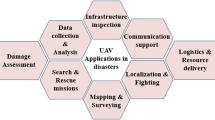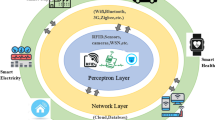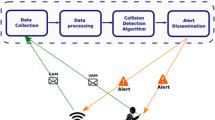Abstract
Privacy and Security have become an indispensable matter of attention in the Vehicular Ad-Hoc Network, which is vulnerable to many security threats these days. One of them is the Denial of Service (DoS) attacks, where a malicious node forges a large number of fake identities, i.e., Internet Protocol (IP) addresses in order to disrupt the proper functioning of fair data transfer between two fast-moving vehicles. In this paper, a distributed and robust approach is presented to defend against DoS attacks. In this proposed scheme, the fake identities of malicious vehicles are analyzed with the help of consistent existing IP address information. Beacon packets are exchanged periodically by all the vehicles to announce their presence and to become aware of the next node. Each node periodically keeps a record of its database by exchanging the information in its environment. If some nodes observe that they have similar IP addresses in the database, these similar IP addresses are identified as DoS attacks. However, it can be expected that security attacks are likely to increase in the coming future due to more and more wireless applications being developed onto the well-known exposed nature of the wireless medium. In this respect, the network availability is exposed to many types of attacks. A DoS attack on the network availability is being elaborated in this paper. A model of a product interaction for DoS prevention has been developed called “IP-CHOCK” that will lead to the prevention of DoS attacks. The proposed approach will be able to locate malicious nodes without the requirement of any secret information exchange and special hardware support. Simulation results demonstrate that the detection rate increases when optimal numbers of nodes are forged by the attackers.



















Similar content being viewed by others
References
Rivas, D. A., Barcelo-ordinas, J. M., Zapata, M. G., & Morillo-pozo, J. D. (2011). Security on VANETs: Privacy, misbehaving nodes, false information and secure aggregation. Elsevier Journal of Network and Computer Applications, 34(6), 1942–1955.
Isaac, J. T., Zeadally, S., & Camara, J. S. (2010). Security attack and solutions for vehicular ad hoc networks. IET Communications Journal, 4(7), 894–903.
Yuh-Shyan, C., Chih-Shun, H., & Wei-Han, Y. (2012). An IP passing protocol for vehicular ad hoc networks with network fragmentation. Elsevier Computer and Mathematics with Applications, 63(2), 407–426.
Wu, B., Chen, J., Wu, J., & Cardei, M. (2007). A survey on attacks and countermeasures in mobile ad hoc networks. Springer Journal of Wireless Network Security, 2, 103–135.
Yousefi, S., Mousavi, M. S., & Fathy, M. (2006). Vehicular ad hoc networks (VANET): Challenges and perspectives. In 6th ITS telecommunications conference (pp. 761–766), June 21–23.
Muraleedharan, R., & Osadciw, L. A. (2009). Cognitive security protocol for sensor based VANET using swarm intelligence. In 43th IEEE Asilomar signals, systems and computers conference (pp. 288–290), July 1–4.
Hamieh, A., Ben-Othman, J., & Mokdad, L. (2009). Detection of radio interference attacks in VANET. In IEEE global telecommunications conference, GLOBECOM (pp. 1–5), Nov. 30–Dec. 4, 2009.
Albert, W., Rongxing, L., Xiaodong, L., & Xuemin, S. (2010). Complementing public key infrastructure to secure vehicular ad hoc networks. IEEE Wireless Communication, 17(5), 22–28.
Yang, Z., & Guohong, C. (2011). V-PADA: Vehicle-Platoon-aware data access in VANETs. IEEE Transactions on Vehicular Technology, 60(5), 2326–2339.
Chun-Ta, L., Min-Shiang, H., & Yen-Ping, C. (2008). A secure and efficient communication scheme with authenticated key establishment & privacy preserve for vehicular ad hoc network. ELSEVIER Journal of Computer Communications, 31(12), 2803–2814.
Baber, A., Soyoung, P., & Cliff, Z. C. (2010). Secure traffic data propagation in vehicular ad hoc networks. International Journal Ad Hoc and Ubiquitous Computing, 6(1), 24–39.
Soyoung, P., & Cliff, Z. C. (2008). Reliable traffic information propagation in vehicular ad hoc networks. IEEE Sarnoff Symposium Conference (pp. 1–6), April 28–30, 2008.
Nai-Wei, L., & Hsiao-Chien, T. (2007). Illusion attack on VANET applications—A message plausibility problem. IEEE Globecom workshops (pp. 1–8), Nov. 26–30, 2007.
Chim, T. W., Yiu, S. M., Hui, L. C. K., & Li, V. O. K. (2011). SPECS: Secure & privacy enhancing communications schemes for VANETs. ELSEVIER Ad Hoc Networks, 9(2), 189–203.
Sichitiu, M. L., & Kini, M. (2008). Inter-vehicle communication system: A survey. IEEE Communications Surveys and Tutorials, 10(2), 88–105.
Nzouonta, J., Rajgure, N., Guiling, W., & Borcea, C. (2009). VANET routing on city roads using real-time vehicular traffic information. IEEE Transactions on Vehicular Technology, 58(7), 234–245.
Sampigethaya, K., Mingyan, L., Lepin, H., & Poovendran, R. (2007). AMOEBA: Robust location privacy scheme for VANET. IEEE Journal on Selected Areas in Communications, 25(8), 1569–1589.
Mohandas, B. K., & Liscano, R. (2008). IP address configuration in VANET using centralized DHCP. In 33rd IEEE local computer networks conference, LCN (pp. 608–613), Oct. 14–17, 2008.
Wu, M., Yang, L., Li, C., & Jiang, H. (2008). Capacity, collision and interference of VANET with IEEE 802.11 MAC. In 1st Intelligent networks and intelligent systems conference, ICINIS (pp. 251–254), Nov. 1–3, 2008.
Willke, T. L., Tientrakool, P., & Maxemchuk, N. F. (2009). A survey of inter-vehicle communication protocols & their applications. IEEE Communications Surveys & Tutorials, 11(2), 3–20.
Jingxuan, W., & Wei, Y. (2009). RBM: A role based mobility model for VANET. In Communications and mobile computing conference (pp. 437–443), Jan. 6–8, 2009.
Abedi, O., Barangi, R., & Azgomi, M. A. (2009). Improving route stability and overhead of the AODV routing protocol and make it usable for VANETs. In 29th IEEE distributed computing systems workshops (pp. 464–467), June 22–26, 2009.
Khaled, Y., Tsukada, M., & Ernst, T. (2009). Geographical information extension for IPv6: application to VANET. In 9th Intelligent transport systems telecommunications conference, ITST (pp. 304–308), Oct. 20–22, 2009.
Raja, M., & Hubaux, J. P. (2007). Securing vehicular ad hoc networks. Journal of Computer Security (Computer & Communication Science), 15(1), 39–68.
Tiecheng, W., & Gang, W. (2010). TIBCRPH: Traffic infrastructure based cluster routing protocol with handoff in VANET. In 19th IEEE wireless & optical communication conference, WOCC (pp. 1–5), July 14–15, 2010.
Ohta, T., Ogasawara, K., & Kakuda, Y. (2010). End-to-end transfer rate adjustment mechanism for VANET. In 3rd Dependability conference, DEPEND (pp. 1–6), July 18–25, 2010.
Hao, J., Siyue, C., Yangg, Y., Zhizhong, J., Henry, L., Xu, J., & Wang L. (2010). Estimation of packet loss rate at wireless link of Vanerple. In 6th IEEE wireless communications networks & mobile computing conference, WICOM (pp. 1–5), Sept. 23–25, 2010.
Mishra, T., Garg, D., & Gore, M. M. (2011). A publish/subscribe communication infrastructure for VANET applications. In IEEE advanced information networking and applications (WAINA) workshops (pp. 442–446), March 22–25, 2011.
Hamieh, A., Ben-Othman, J., & Mokdad, L. (2009). Detection of radio interference attacks in VANET. In IEEE global telecommunications conference (pp. 1–5), Nov. 30–Dec. 4, 2009.
Wasef, A., & Rongxing, L. (2010). Complementing public key infrastructure to secure vehicular ad hoc networks. IEEE Wireless Communications (Security & Privacy in Emerging), 17(5), 22–28.
Jianmin, C., & Jie, W. (2009). Cooperative anonymity authentication in vehicular networks. In 6th IEEE mobile ad hoc & sensor system conference, Mass (pp. 1018–1023), Oct. 12–15, 2009.
Xiaodong, L., Xiaohui, L., & Xuemin, S. (2010). FLIP: An efficient privacy-preserving protocol for finding like mined vehicles on the road. In IEEE global telecommunications conference, GLOBECOM (pp. 1–5), Dec. 6–10, 2010.
Ramakrishnan, B., Rajesh, R. S., & Shaji, R. S. (2011). Analysis of routing protocols for highway model without using and cluster. International Journal of Scientific & Engineering Research, 2(1), 1–9.
Ramakrishnan, B., Rajesh, R. S., & Shaji, R. S. (2010). Performance analysis of 802.11 and 802.11p in cluster based simple highway model. International Journal of Scientific & Engineering Research, 1(5), 420–426.
Jing, Z., & Guonong, C. (2008, April). VADD: Vehicle-assisted data delivery in vehicular ad hoc networks. In IEEE transactions on vehicular technology (Vol. 57, no. 3, pp. 1910–1922).
Kui-Ten, F., Chung-Hsien, H., & Tse-En, L. (2008). Velocity assisted predictive mobility and location aware routing protocols for mobile ad hoc networks. IEEE Transactions on Vehicular Technology, 57(1), 448–464.
Xiaoping, X., & Jia, D. (2011). LPA: A new location-based privacy-preserving authentication protocol in VANET. WILEY Journal of Security and Communication, Networks, 5(1), 69–78.
Rongxing, L., Xuemin, S., Xiaodong, L., & Haojin, Z. (2009). Security in service oriented vehicular ad hoc networks. IEEE Wireless Communications, 16(4), 16–22.
Kargl, F., Papadimitrators, P., Buttyan, L., Muter, M., Schoch, E., Wiedersheim, B., et al. (2008). Secure vehicular communication systems: Implementation, performance, and research challenges. IEEE Communications Magazine, 46(11), 110–118.
Choffnes, D. R., & Bustamante, F. E. (2005, Sept.). An integrated mobility and traffic model for vehicular wireless networks. In 2nd Vehicular ad hoc networks (VANET), workshop (pp. 69–78).
Grover, J., Gaur, M. S., & Laxmi, V. (2011). A sybil attack detection approach using neighboring vehicles in VANET. In 4th Security of information and networks conference (pp. 151–158), Nov. 14–19, 2011.
Grover, J., Gaur, M. S., & Laxmi, V. (2010, Nov.). A novel defense mechanism against sybil attacks in VANET. In 3rd Security of information and networks conference, SIN (pp. 249–255).
Khaleel, M., Hassan, A., & Mario, G. (2012). ROAMER: Roadside units as message router in VANETs. Elsevier, Ad Hoc Networks, 10(3), 479–496.
Congyi, L., & Chunxiao, C. (2012). RPB-MD: Providing robust message dissemination for vehicular ad hoc networks. Elsevier, Ad Hoc Networks, 10(3), 497–511.
Acknowledgments
This work is funded by Universiti Teknologi PETRONAS Postgraduate Assistantship Scheme.
Author information
Authors and Affiliations
Corresponding author
Rights and permissions
About this article
Cite this article
Verma, K., Hasbullah, H. & Kumar, A. Prevention of DoS Attacks in VANET. Wireless Pers Commun 73, 95–126 (2013). https://doi.org/10.1007/s11277-013-1161-5
Published:
Issue Date:
DOI: https://doi.org/10.1007/s11277-013-1161-5




